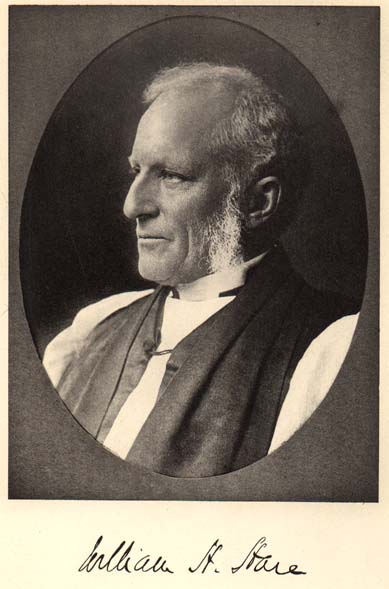 |
APOSTLE TO THE SIOUX STURGIS & WALTON COMPANY 1911 |
 |
APOSTLE TO THE SIOUX STURGIS & WALTON COMPANY 1911 |
Chapter I. The Boy and the Man, 1838-1859
Chapter II. In Parish and Missions Office, 1860-1872
Chapter III. A Pioneer in Niobrara, 1873-1878
Chapter IV. Religion, School and Government, 1873-1878
Chapter V. Trials of Body and Spirit, 1873-1878-1887
Chapter VI. The Hard Road to Civilization, 1878-1883
Chapter VII. The Missionary to Two Races, 1883-1891
Chapter VIII. In Japan and China, 1891-1892
Chapter IX. Fruits of Experience, 1891-1908
Chapter X. The Divorce Reform Campaign, 1893-1908
Chapter XI. To the Last, 1895-1909
THE inscription on a memorial in St. Luke's Church, Philadelphia, to my father, the first Bishop of Central Pennsylvania, was written by his son-in-law, Bishop Hare. Beneath a summary of personal and official qualities a sentence reads: "This tablet is placed here that he may still speak."
So in turn this book is written that Bishop Hare "may still speak." In a life crowded with action there was no opportunity for the writing of books. But he wrote abundantly and well. In letters, in printed reports and pamphlets, a large body of his writing has come into my hands. Out of this material it has been my aim to make a book which shall be substantially his book. Such it will be if it can carry with it not only his speech but also something of that spirit of the saint and the knight which illuminated all his arduous days.
Of the physical structure of the book, it is to be said that in arranging a narrative drawn so largely from writings produced with no thought of continuity, it has been necessary to face deliberately the dangers of a disjointed effect. If this effect is felt, the reader may be asked to consider whether the disadvantage of re-casting the words in which Bishop Hare told his own story would not have been greater.
Many persons related to Bishop Hare through the kinship of blood or of common interest have rendered valuable aid in the preparation of this book. Special thanks are due to his sister, Miss Mary H. Hare, to his son, Dr. Hobart Amory Hare, both of Philadelphia, and to Miss Mary B. Peabody, of Sioux Falls, South Dakota.
M. A. DeW. H.
Boston, July, 1911.
Project Canterbury